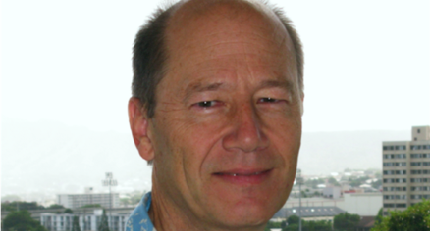The American Bruce Howe, third international speaker confirmed in TICAL and the e-Science Meeting, will bring to the plenary sessions of the events an issue that is more relevant than ever: the possibilities for NREN contributions in environmental issues, especially climate change and its consequences, like tsunamis and earthquakes. In this interview, Howe, who is a Research Professor at the University of Hawaii at Manoa and president of the international task force known as the “SMART Cable Initiative” (Science Monitoring And Reliable Telecommunication) shares his experience in the area and gives his opinion on how advanced networks can be allies for the preservation of the environment.
Could you tell us a little about you and your professional background?
I grew up in Washington DC and then attended Stanford University where I was fortunate enough to work the entire time in the air-sea interaction lab, where I learned all aspects of research from the graduate students and advisors. In grad school at Scripps Institution of Oceanography, I dove into ocean acoustics and tomography as a way of measuring large scale ocean variables such as heat content and velocity. This is still my passion.
How did you start working with SMART?
In a project started in 1992, Acoustic Thermometry of Ocean Climate, I laid two cables to power acoustic transmitters. This got me into submarine cables, including planning and technical aspects of the NEPTUNE cabled ocean observatory systems now in the northeast Pacific. Since I came to the University of Hawaii at Manoa in 2008, I shifted part of my work to the local, deep ALOHA Cabled Observatory (ACO). It was in this time period that a news article was published in Nature suggesting the SMART concept (Science Monitoring And Reliable Telecommunications; at the time called “green” cables). I got involved with the author (John Yuzhu You) and am now leading this international effort sponsored by UN agencies.
What is ALOHA and how was the process of implementing it? Would you give us some examples of achievements of the initiative?
The ALOHA Cabled Observatory is the deepest plug-and-play cabled ocean observatory on the planet, at 4728 m water depth. That, and the operation since 2007 (continuous since 2011), is a significant technical achievement. On the bottom we have acquired long time series of temperature, salinity, pressure, velocity and video. From these we are learning new things about deep ocean turbulence and mixing and the state of the local ecosystem. A goal is to extend measurements up into the water column and to the surface using robotic cable connected equipment.
How can networks such as RedCLARA help ALOHA’s development?
ALOHA is just one of a number of dedicated science and early warning cabled observatories around the world. These are typically covering relatively small areas with dense coverage of sensors, but at high cost. SMART cables, sensors sharing the submarine cable infrastructure with telecom, should significantly reduce the cost to science/early warning. RedCLARA and other research and education networks can help in at least two ways. The first is to simply provide high quality connectivity so the data from the various observing networks can be efficiently circulated around the globe enabling associated early warning and research activities (and some of the data, especially acoustic and video is “big data”). Second, research networks can recognize that the network itself can become environmentally “aware,” sensing its environment, either using the optical fibers themselves or adding additional sensors. With their significant “buying power” and national and international influence, such networks can have a say in the actual cable systems and the incorporation of SMART capability to benefit society.
What will be the main topics of your presentation in TICAL?
I’ll begin with motivation, the state of knowledge and needs for aspects of climate change, ocean monitoring and disaster risk reduction, from global to regional (Latin America and Caribbean) scales, giving examples of how research and education networks can play a role. Then I will show how SMART cables can be implemented and contribute to improving our ability to better predict climate and ocean changes, and to mitigate earthquake and tsunami risk. Non-technical issues such as funding, permitting, and legal will be discussed.





